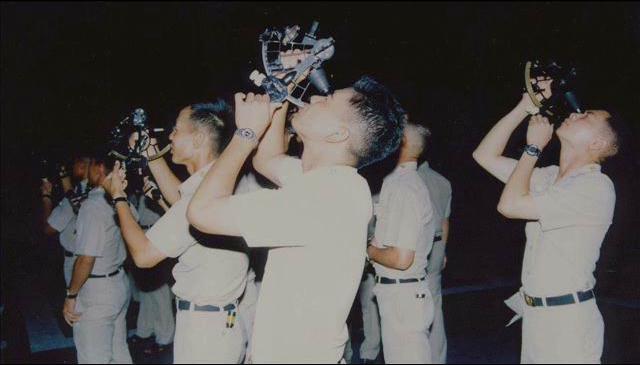 |
| In the third year, the training focuses on celestial navigation. We prepare ourselves before training by calculating the nautical and civil twilight time, meridian pass (mer pass) time, sunrise and sunset time and moonrise and moonset time. About 5 minutes before the training we have to get the sextant up on the fantail or signal bridge. We use the sextant to calculate the angle of sky objects, such as the sun and the stars. In one training we have to get the angle (degree) 3 times and put it on a form called Yee-tok (observation record form). We work in pairs; one is using the sextant, one is recording the value on Yee-Tok. During the training one of us has to tell the time in seconds. In the early morning and evening we have to take a torch with us, because it's too dark and we can't see anything. We may hit a ship fitting or lose something in the sea or man overboard. We don't train on days when the sky is clouded, because we can't see anything in the sky. The celestial navigation will be used when the ship's navigation system fails. It's useful but too slow. |
